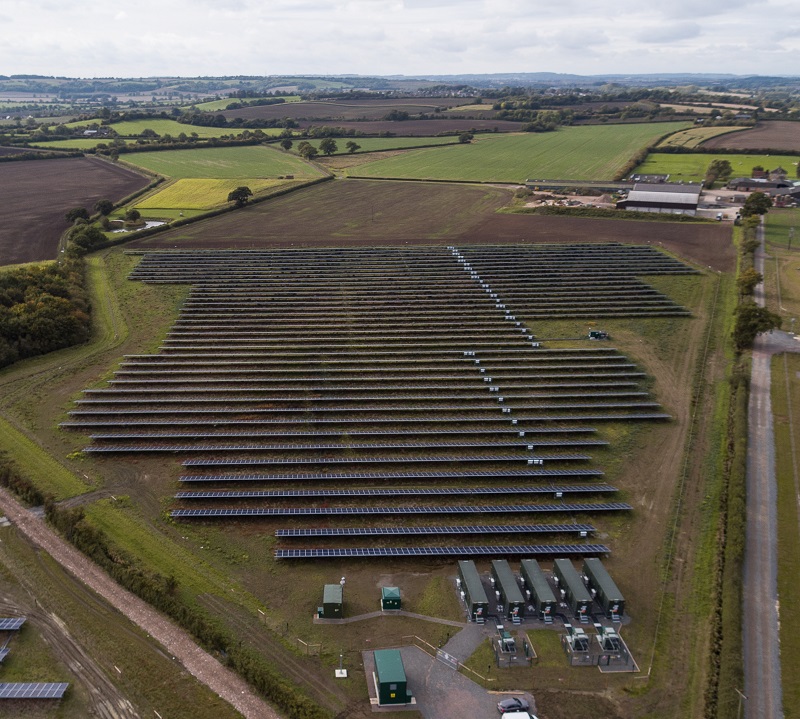As speculation mounts of a potential snap election in the U.K. thanks to Prime Minister Theresa May's Brexit mauling, the opposition Labour Party this morning unveiled its vision of a greenhouse gas emission-free energy system.
Shadow Business Secretary Rebecca Long-Bailey was due to outline her party's plan to go above and beyond the U.K.'s existing clean energy target by removing GHG emitting generation altogether by 2050.
In its coverage of the speech – made at Labour's party conference in the northwestern English port of Liverpool – the left-leaning Guardian newspaper focused on central role wind power would play in such an energy transition, and failed to mention what proportion of the future energy mix would be provided by nuclear, alongside renewable technologies.
However the U.K.'s Solar Trade Association (STA) welcomed the policy proposal.
‘Solar and wind can work together for UK'
“It’s great to see political ambition commensurate with the challenge of climate change. That is warmly welcome,” Leonie Greene, Head of External Affairs for the trade body told pv magazine.
The Guardian article speculated Labour's medium-term ambition to source 85% – rather than the current aim of 50% – of energy from renewables by 2030 would involve a tripling in the scale of solar installation.
Popular content
“Actually, given supporting regulation and grid infrastructure, it would be easy for solar capacity to triple by 2030,” added the STA's Greene. “That would mean 26 GW of new capacity by then, which is between 2 and 3 GW per annum. The industry installed over 4 GW in 2015 and this is an industry highly motivated by the challenge of climate change. There’s also [the] increasing appetite from local government to invest directly in solar which needs to be accommodated.
How much nuclear?
“If I have any concerns, it’s on central government stipulating technology mixes and potentially overriding lowest-cost solutions and sensible technical needs, though it is helpful to have targets. The key lesson from the continent is that it is important to engineer solar and wind energy together, as their annual generation profile is complementary.”
And on the elephant in the room – the extent to which the U.K.'s “clean energy” would rely on nuclear under a party with a track record of adopting unpopular policies and investments put in place by its predecessors in government – the STA representative was cautious, adding: “Nuclear doesn’t add to the system flexibility needed to accommodate large volumes of ambient renewables, and could therefore add to overall costs.”
Prime Minister May's government is yet to reveal its decision over whether to cancel the lingering remnants of the national FiT scheme for solar, or whether it will enact its proposal to deny small-scale renewable energy generators – such as households with solar rooftops – the right to payments for excess energy fed back into the grid.
This content is protected by copyright and may not be reused. If you want to cooperate with us and would like to reuse some of our content, please contact: editors@pv-magazine.com.



Carbon emission reduction alone will not gain control of climate change. Corbyn needs to comprehend that carbon dioxide removal is the most critical strategy in the fight against climate change. Carbon capture must initially exceed carbon emissions and eventually equal emissions at the optimum level of 280 ppm.
Plants extract carbon from the atmosphere; they separate hydrogen from water and bond the atoms to carbon to form hydrocarbon fuels and carbohydrate foods. The residual oxygen is released to the atmosphere. Population expansion must be matched by proportionate cultivation of new plant life.
The hitherto missing component has been abundant supplies of fresh water for barren land irrigation, delivered with zero energy costs, by a low cost simple process that can be operated and maintained by unskilled people.
The technology is now in place, it is British and defined as “Isothermal Gas-Free Water Distillation”; the EU and USA have granted 21 claims of novelty. Vast quantities of purified saltwater can now be produced and piped into the desert by the power of solar energy.
Andrew Mitchell MP takes the view that overseas aid should boost British interests. Diverting a percentage of the UK’s annual £13 billion aid through British engineering companies to produce and commission the new water purifiers would provide developing countries with sustainable relief and create many new quality jobs in the UK and in the developing world.
Water stressed starving people, with guidance from British horticulturists, can become major producers of food and biofuels.